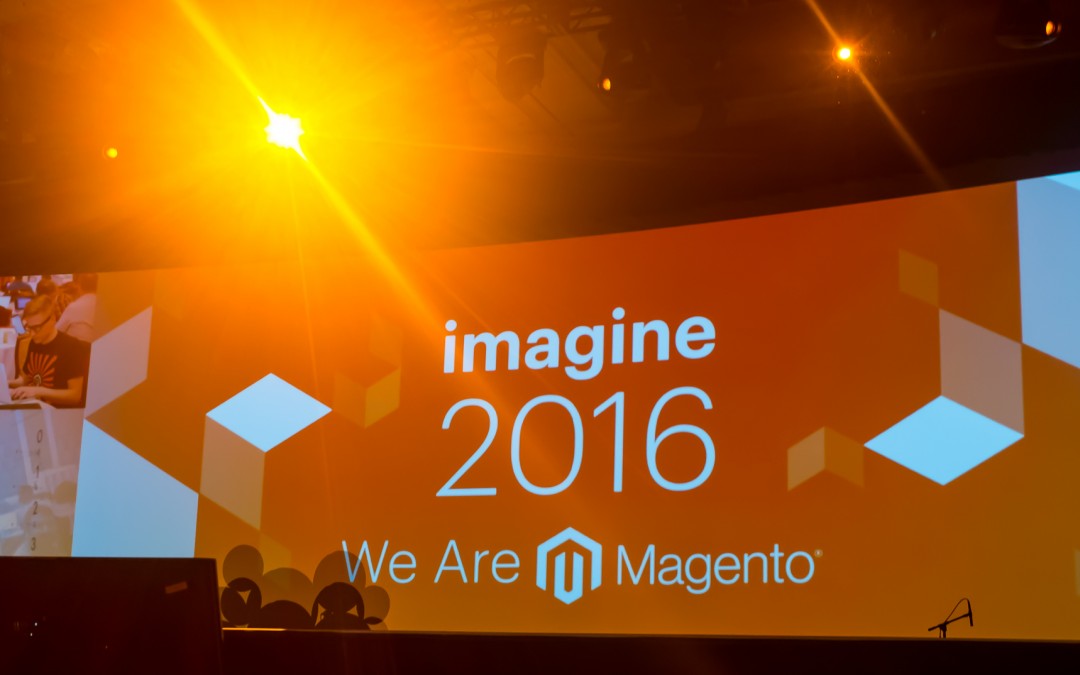Last week I was at my fifth Magento Imagine conference, and as I’ve done for the past five years, I’m doing a recap of my experience there, inducing what’s new, what’s the same, and what to expect for the year to come.
The big elements from the event include:
- Magento 2 Enterprise Cloud Edition (more on this below) using Platform as a Service (PaaS). This gives the benefits of a hosted, cloud solution, but full access to the entire code base – something you can’t get with a hosted SaaS (Software as a Service) solution.
- Lots of information about Magento 2 and how to supercharge performance. I’m especially excited about Magento 2 having full page cache support and Varnish 4 support, out of the box – in both Community and Enterprise.
- Magento is now its own company, having spun off from eBay and taken on private equity. It’s now called Magento Commerce.
- Magento Order Management: The Frankfurt Airport is Germany’s largest shopping mall, and they are running a pretty crazy order and delivery system using Magento Enterprise and the Magento Order Management system (more below).
- Magic Johnson was the keynote speaker, and talked a lot about how he has been successful in business (more below).
- Most of the past major sponsors were back, including Nexcess (hosting for Magento 1.x and Magento 2.0) and PayPal (payments).
It was wonderful to be a part of the conference, especially since Customer Paradigm is one of 105 companies worldwide that has been certified as a Magento 2 Trained Solution Provider. We also have four extensions on the Magento 2 Marketplace.
The following is a recap of my experience. I did not attend all of the breakout sessions, and I did attend several confidential briefings, which I will not be including in this. I used two cameras: my Canon 5D Mark III with a 70-200mm f/2.8 lens, as well as my Fuji X100T, with a fixed 23 mm lens – for the wider angles and screenshots.
Magento Imagine 2016 opened with a musical performance; the screen moved to the beat of the drums:

The drummer used a vertical drum set:

Mark Lavelle, CEO of Magento Commerce, started off the event:
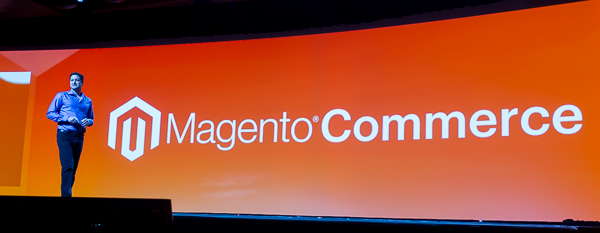
Lavelle talked about how Magento is the #1 eCommerce solution in the marketplace, because of:
- 250,000 merchants using the system.
- 3,100 Enterprise customers
- 300 Top-Tier Solution and Technology Partners (Customer Paradigm is one of them)
- 1000+ Solution Implementers
- 125,000 Developers
- 5,900+ Certified developers
Magento has a pretty global reach:

Magento handles more than $50 billion in annual commerce value (although this is likely understated).
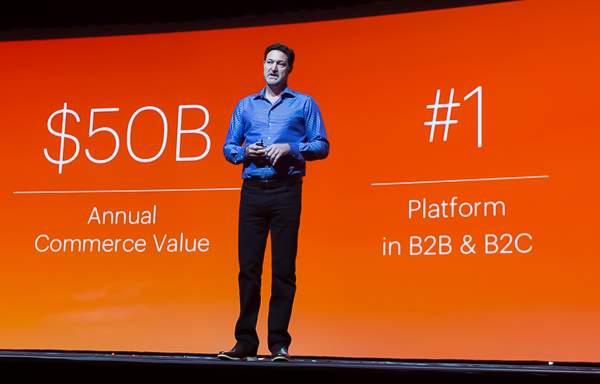
Lavelle credits the technology partners in a big part for making this happen.
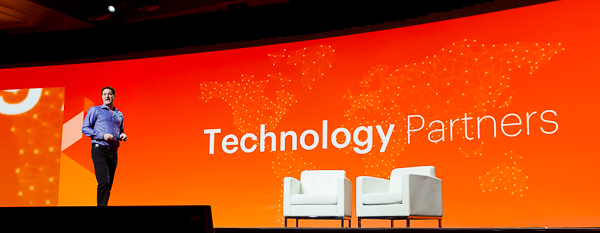
If you’ve worked in the space long enough, you’ve probably heard someone call the platform by its comic book moniker, Magneto, but this was thrown in for a little bit of comic effect.
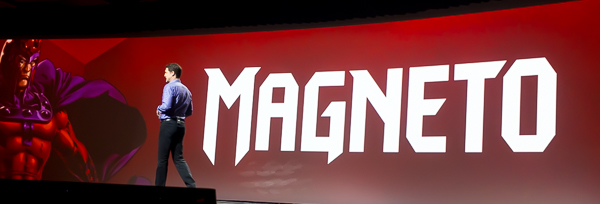
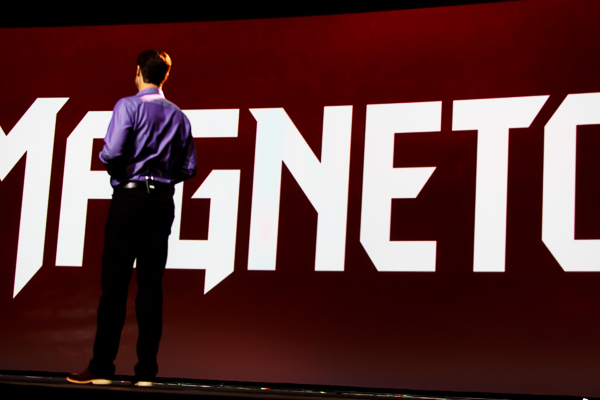
Next, Paul Boisvert came to the stage. Boisvert is the Vice President of Product Management for Magento Commerce.
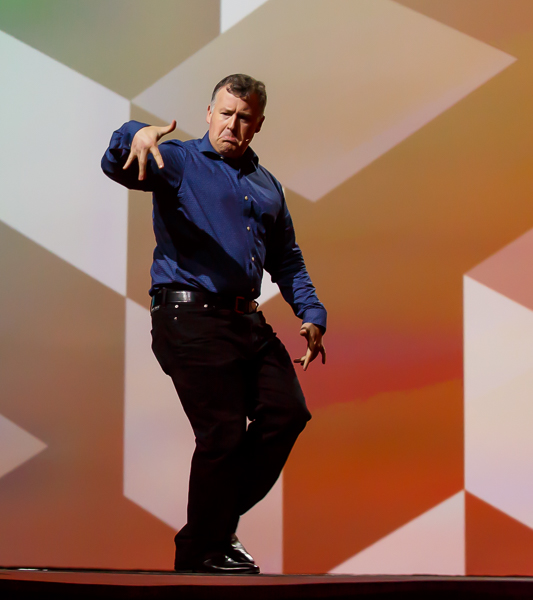
Boisvert helped announce the new release of Magento 2.1, which is due out in the next month or so:
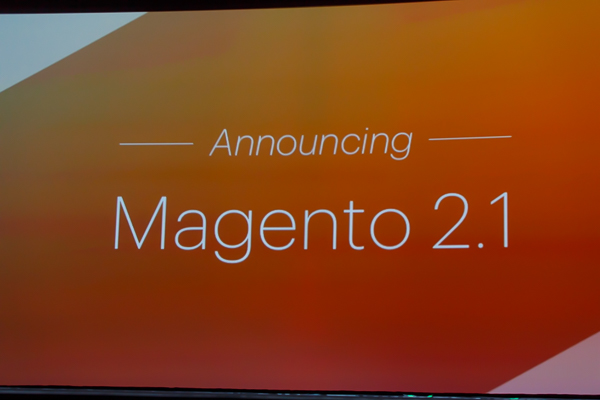
Magento version 2.1 is the first full feature release, and promises (for the Enterprise platform):
- Staging and preview
- Elastic search support
- Checkout using in-context methods for PayPal and BrainTree.
- A Code migration tool for Magento 1.x to Magento 2.
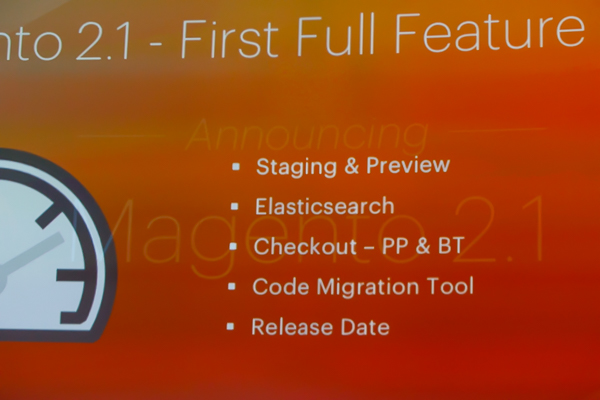
Boisvert showed off some of the new features for staging and preview:
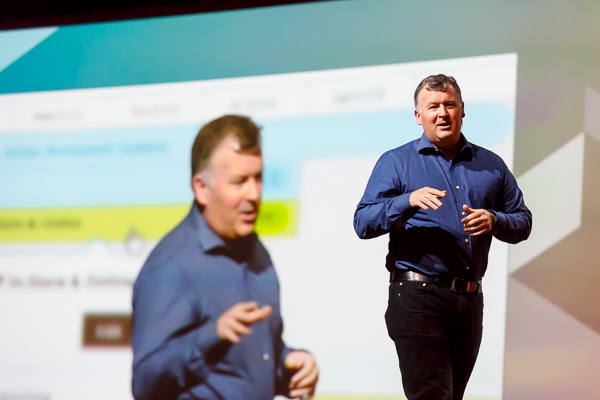
… but not before doing a vertical jump and chest bumping with MC and host, Jamie Clarke:
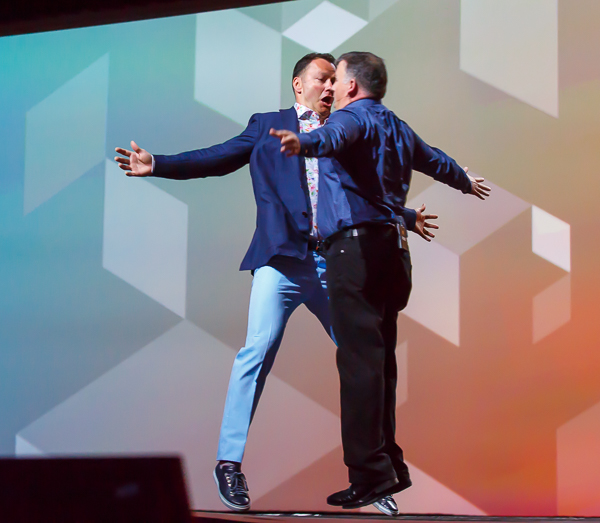
Boisvert calls Magento 2 a next generation digital platform:
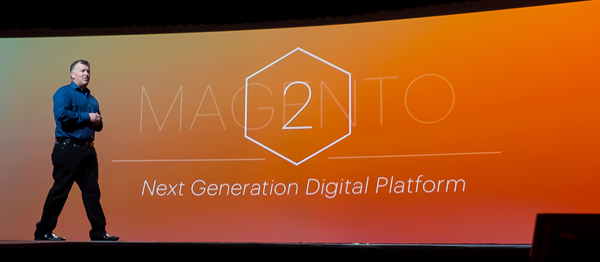
It allows merchants to go direct to consumers, with mobility built-in, international expansion and helping keep up with the accelerating pace of change.
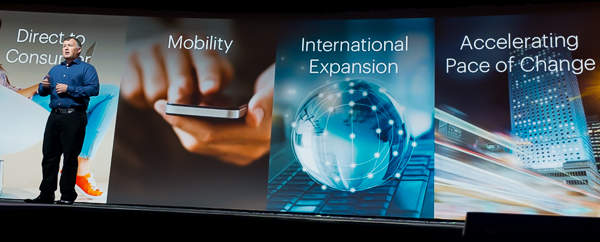
Magento 2 allows for open flexibility, agility and great scale and performance. Magento 2 has full page caching and Varnish support out of the box.
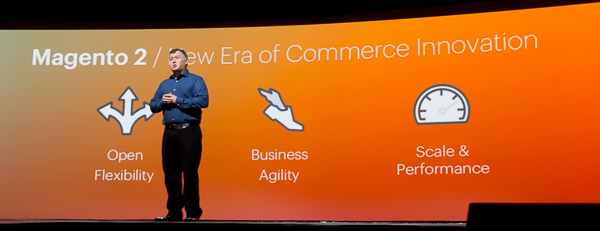
Boisvert highlighted the 105+ Magento 2 Trained Solution Partners (of which Customer Paradigm is one).
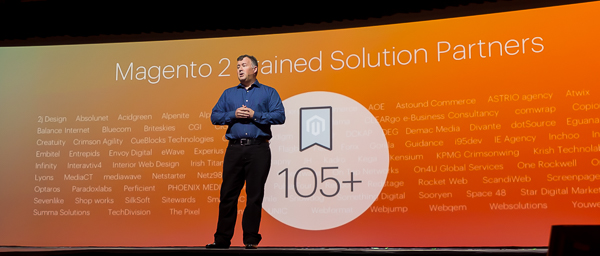
Boisvert was standing in front of my company’s name, but when he moved I got a closer shot:
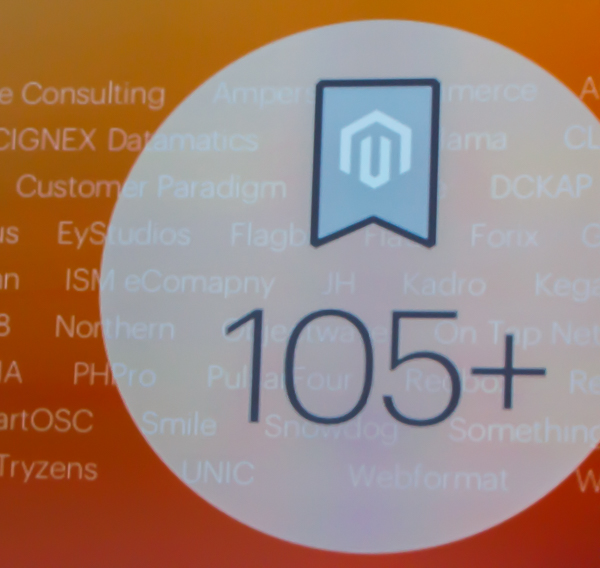
Is Magento 2 taking off? Right now there are 800 active Magento 2 sites, and the software has been downloaded more than 228,000 times.
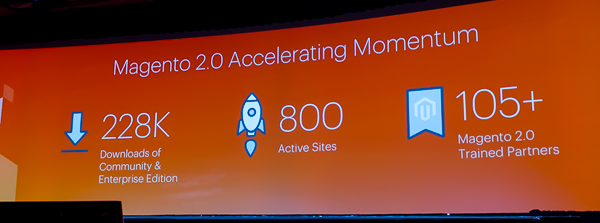
Boisvert talked about how Magento 2 allows for a merchant to take a lot more orders per hour, without having to change their server hardware.
And with full page cache and Varnish 4 support for both Magento Community and Enterprise, the system works really well.
Both Community and Enterprise have great performance. Enterprise Edition offers scalability.
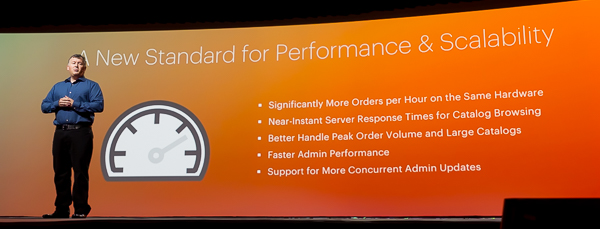
On the Enterprise front, Magento 2.0 EE (Enterprise Edition) is much, much faster than Magento Enterprise 1.14:
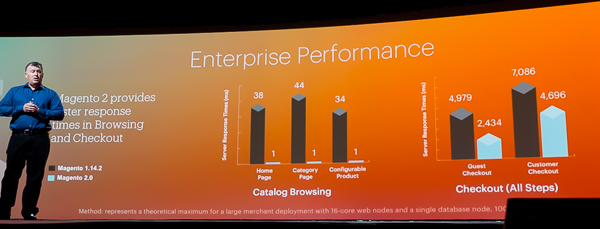
For example, Magento 2 yields 117% more orders per hour than prior versions. In testing, a Magento 2 site could handle 250,000 orders vs. 115,000 on Magento Enterprise 1.14:
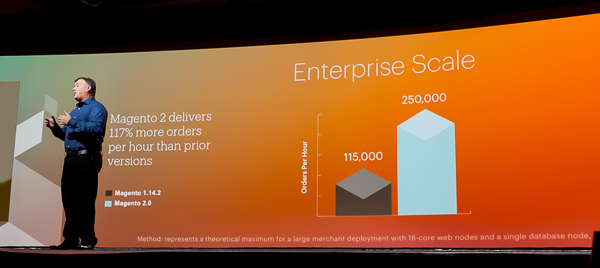
I’ve actually seen Magento hit performance issues at extremely high volume; this is wonderful news that the system has been architected to perform so well at scale.
Due to the better performance, Magento 2 has led to improved site conversion in testing, due to better checkout processes, and fewer steps:
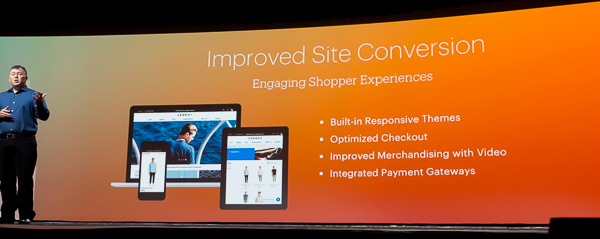
Magento 2’s theme system is a lot easier to work with as well for developers. What this means for designers is that you no longer have to copy an entire theme to make a new brand site – you can just pick and choose what you want, and the system will work as a result:
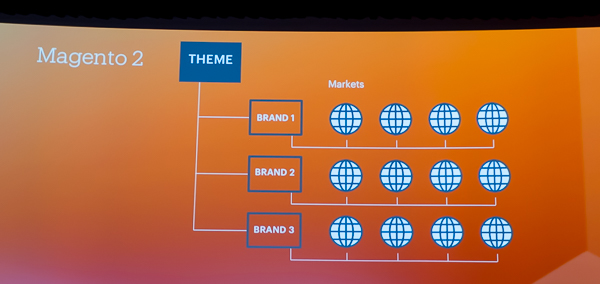
This is in contrast to the Magento 1.x theming system:
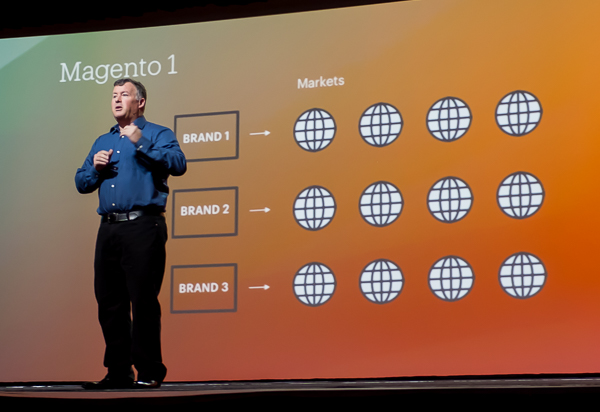
Boisvert talked about some of the core technology updates of Magento 2.0, including a much more modern stack, modular systems, automated testing, and better integration points.
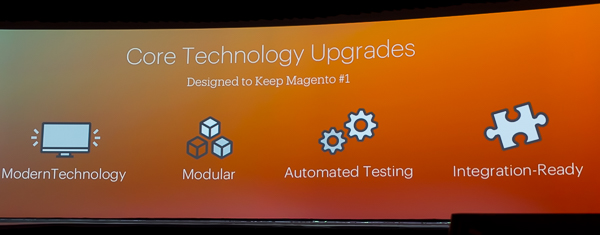
Because of the way Magento 2 has been built, it promises better upgrades, as more care has been taken to avoid extensions and design systems from conflicting with each other.
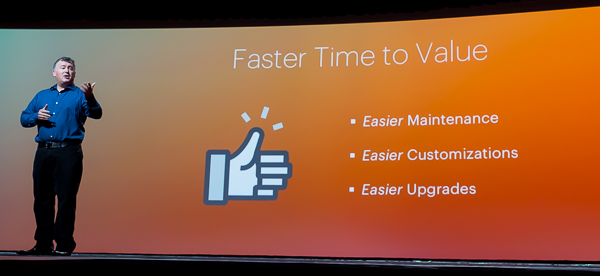
Boisvert talked more about the Magento Enterprise Staging and Preview new feature, in Magento EE 2.1:
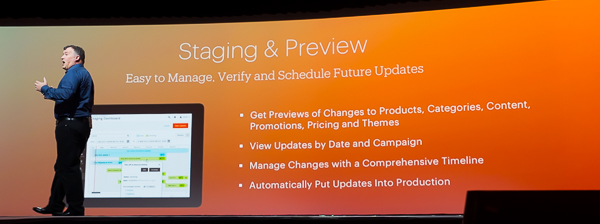
Staging and Preview in Magento 2.1 Enterprise allows you to:
- Work in the Magento admin, but preview product, category and CMS pages.
- See how pricing and themes will work.
- Add new content and design updates, via date or time (so you don’t have to push a new design theme live at midnight).
Magento 2.1 also allows for Elasticsearch, which is an improvement to the older SOLR search system. Plus, it integrates with 33 languages out of the box:
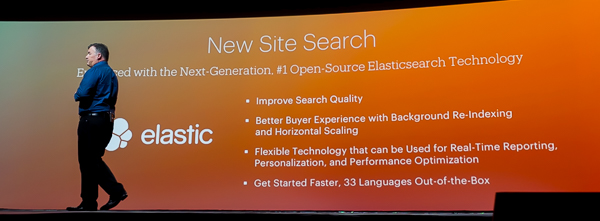
Magento 2.1 allows for an in-context checkout for PayPal or BrainTree, so that no information is actually collected during checkout. But it’s seamless for the end user, and doesn’t interrupt the experience.
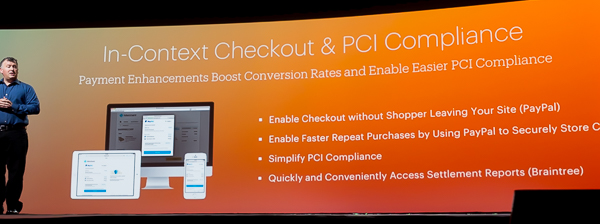
They also discussed a future release of a Magento Enterprise B2B Module, which will include a lot of must-have B2B features for Magento Enterprise, including:
- Account management
- Custom catalogs for B2B customers
- Custom pricing systems
- Request for Quote
- Quick way to place repeat orders, including by SKU
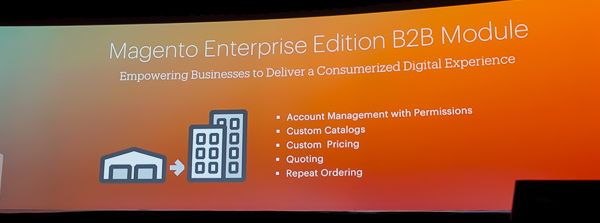
But let me back up a minute. Before the opening session on the big stage, I attended a couple of Magento 2 technical updates and briefings. Without delving into the technical layer, I’ll summarize what this means and how it affects merchants.
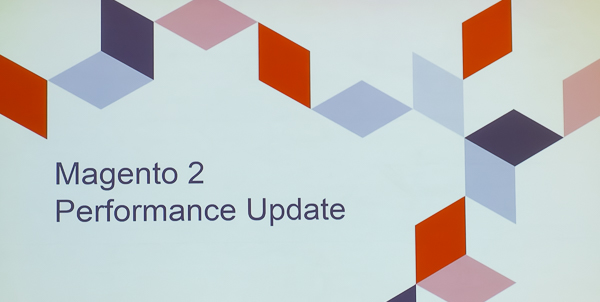
Oleh Kobchenko, an Engineering Manager for Magento discussed how Magento 2 can scale.
Most Magento 2 sites are usually set up on a single server.
For example, you might have a Web server that has:
- Caching (i.e. full page cache or Varnish)
- Web server (i.e. Apache or Ngninx)
- Database (i.e. mySQL)
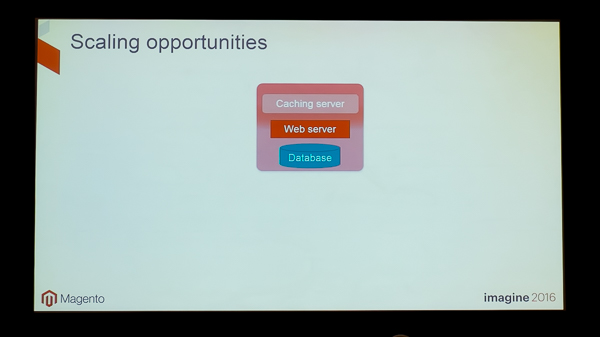
With Magento 2 Community, you can scale out to multiple web servers, although this does require a load balancer.
But the database is a single point of failure, and if you have a lot of people browsing product pages and category pages on your site, then your database can become overloaded with viewing requests, and not have fast capacity for people who want to place orders.
This is a big issue that I have personally seen firsthand if you are trying to push a TON of orders and customers through a Magento system, all at the same time.
Magento 2 Enterprise Edition (EE) allows you to scale to a whole other level, including splitting up your database into three layers:
- Catalog Database
- Checkout Database
- Order / Admin Database
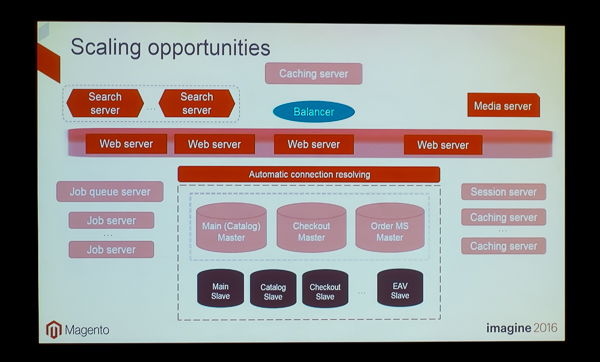
Magento 2 allows you to separate out sessions, caching (i.e. Varnish) as well as images and other media (perhaps using a CDN) in an easier way than the Magento 1.x platform.
Magento did a number of benchmark tests, using a small, medium and large instance of Magento.
Something pretty noteworthy: Magento doesn’t usually talk very much about Magento Community Edition (CE).
In their lower-end benchmark test, they tested out Magento 2.0 CE, using a shared hosting account, without Varnish or Redis.
In case you didn’t know, site caching technology like full page caching or Varnish takes a database-driven site (such as Magento) and creates a "snapshot" of the page so that the server doesn’t have to spend a lot of time and computer resources to build a "heavy" category page for every single user.
With full page cache, a page is "saved" as a static HTML page in the file system. This is pretty fast, except if the page doesn’t exist in the cache. In that case, the site might need to take 7-10 seconds to build the page and load it into the cache. After that, the page load times are 1-2 seconds.
With Magento 1, full page caching was an Enterprise-only feature. (Although there were a few extensions that could replicate 60-80% of the functionality.)
With Magento 2, full page cache support was built into both Community and Enterprise. Magento 2 – both Community and Enterprise – offer great performance.
With Magento 2, however, the full page cache feature is proactive. Meaning that you can run a command in the system, and have Magento build out all of those pages for you ahead of time. So you don’t have 10 people hitting the site and having the server become overloaded with trying to build lots of complicated, database-heavy pages.
Magento 2’s full page cache still relies on the file structure to serve pages. So if you have fast SSD drives on your server, the pages are served very quickly.
However, Magento 2 offers full support for Varnish caching. Varnish is even faster than full page cache, but is tricky to do. Because by default, it wants to cache everything. And that’s a problem when you accidentally cache the cart page, for example.
But Magento 2 uses the edge side include functionality of Varnish to create page load times that are extremely fast. Varnish stores all of the pages in RAM, which is even faster than the file system. Varnish sits in front of the Web server; we run it on our Website, and it makes a big difference.
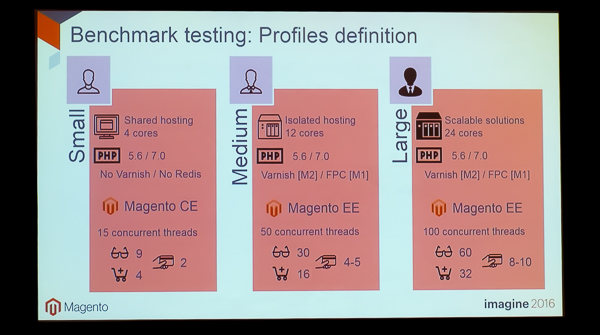
In this small merchant Magento 2.0 Community Edition test, the benchmark shows an 80% faster response time vs. Magento 1.9, when the site is hit with 15 users at the same time.
Magento 2 Community is able to handle 400% more catalog page views per hour than Magento 1.9. Magento 2 CE can handle 200% more shopping cart operations, and is altogether a lot faster:
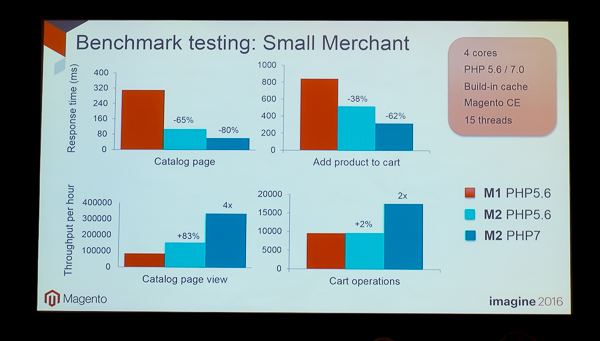
For a medium merchant running 50 threads on Magento 2.0 Enterprise Edition (EE), the performance results were even more dramatic:
Magento 2 EE shows a 12x response time improvement over Magento Enterprise 1.14. This is assuming Varnish (Magento 2) vs. Full Page Cache (Magento 1.14), and running 50 threads during the load balancing test.
Adding products to the cart was 70% faster on Magento 2, and the server was able to support 1,000% more catalog page views vs. Magento 1.14:
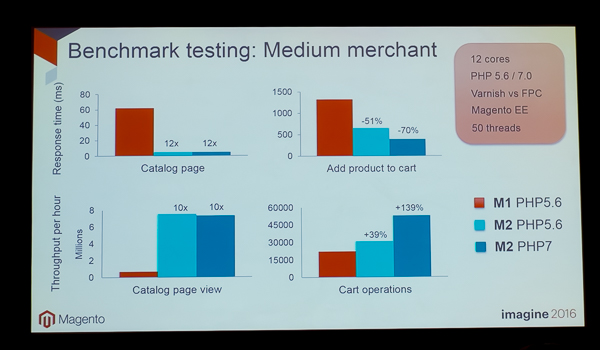
Okay, now for the large scale, Magento Enterprise Edition merchant site running Magento 2 vs. Magento 1.14. In this case, it was Varnish for page caching (instead of full page cache for Magento 1), running 24 core processors and 100 simultaneous threads of users.
Catalog page response times were 600% faster. Adding products to the cart, 70% faster in Magento 2. And a Magento 2 EE site was able to serve up 500% more catalog page views, compared to the same server on Magento Enterprise 1.14.
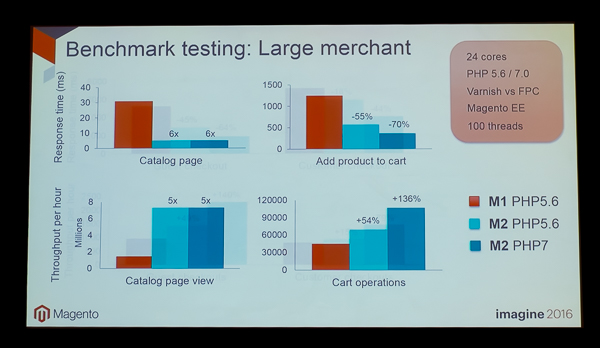
While I do love great bar graphs, what I really wanted to know from the Magento team was how to best tune a Magento site to get really fast results.
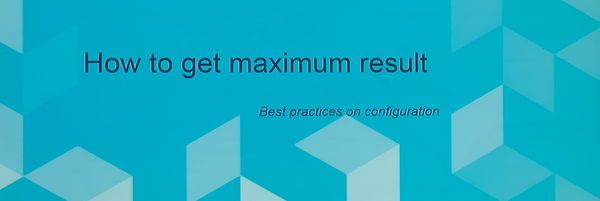
Here’s the environmental settings that Magento recommends for fast performance:
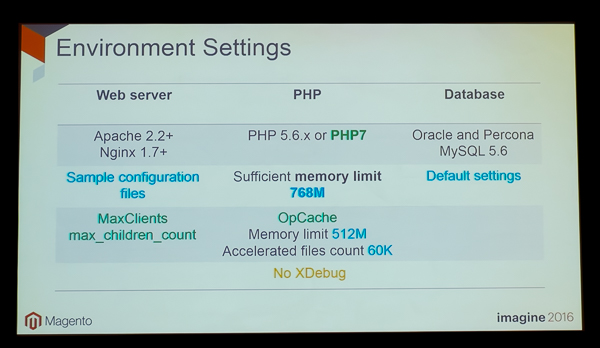
First, Magento recommends using either Apache 2.2+ or Nginx 1.7+. They have provided sample configuration files, and the only settings that need to be fine tuned are the MaxClients max_children_count; this is going to be based on the size of your server.
For PHP, Magento 2 will run on either PHP 5.6 or PHP 7. PHP 7 wasn’t released yet when Magento 2 launched, but it does offer much faster support.
Magento 2 is fine with sufficient memory limit of 768 M; OpCache set to a memory limit of 512 M, and an accelerated file count of 60k. It’s also important on a production server to have XDebug removed.
Magento recommends the default mySQL 5.6 settings for the database; unlike some of the Magento 1.x systems, there shouldn’t be a need for fine tuning the individual settings. Although the specifications are clear, having an expert in Magento 2 hosting, like the team over at Nexcess, is still very important. We have direct experience with their expertise in high performance, supported Magento hosting, both Magento 1.x and now Magento 2.
Deployment with Magento 2 is a little more complex with Magento 2, because of the materialization / proactive cache building process in production mode:
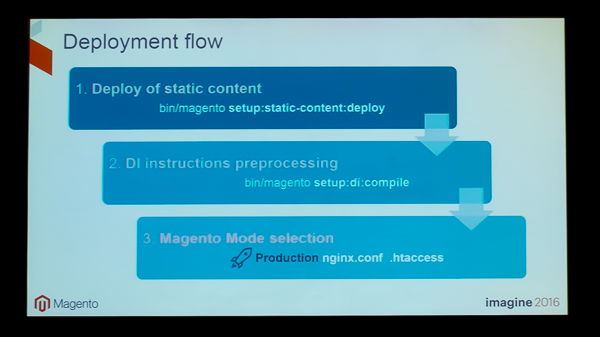
Somewhat overlooked, Magento 2 also offers image compression. So if your Web developer didn’t think to shrink down the file size of a product image, Magento can handle some of this for you. Magento 2 can also handle minification of CSS, JS and HTML; this can speed up rendering time for a site.
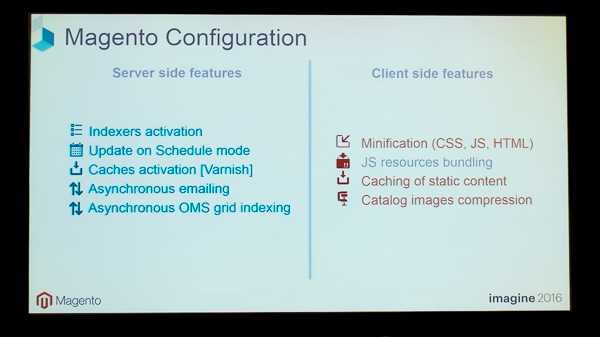
Next, Chuck Choukalos – Magento’s Lead Product Manager, and Alan Kent – Magento’s Chief Architect, spoke about some of the advanced integration features of Magento 2:
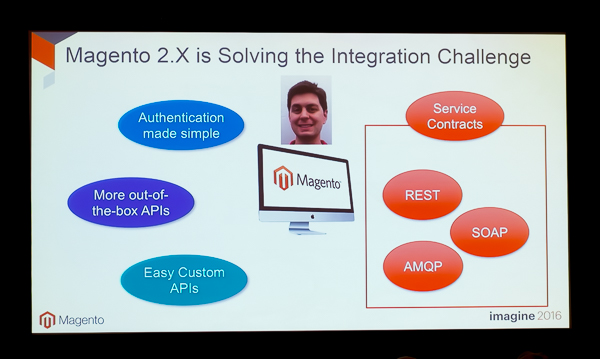
According to Kent and Choukalos, Magento 2:
- Makes authentication simpler
- Gives developers more out of the box APIs
- Allows for easy custom APIs to be built.
This is a big improvement over Magento 1.x.
For example, Magento 2 allows authentication via a session cookie, a username / password, or a long life authorization token:
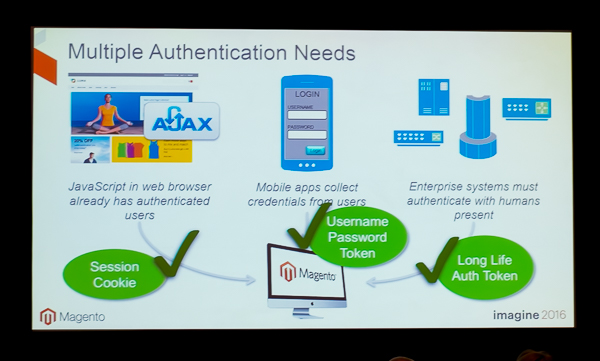
Magento 2 has APIs built in that allow an external system to be able to retrieve product information via a REST API or curl call:
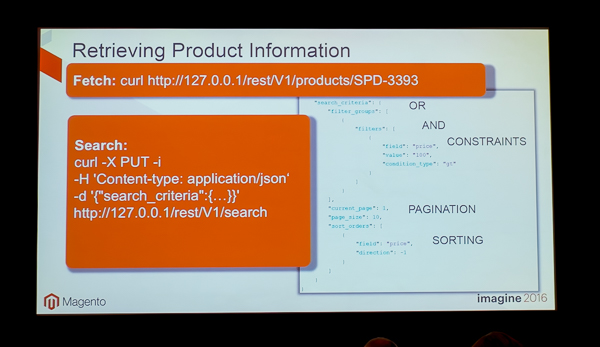
By default, Magento 2 has standard APIs for:
- Catalog
- Inventory
- Search
- Cart
- CMS pages
- Orders
- Tax Rates
- Customer Information
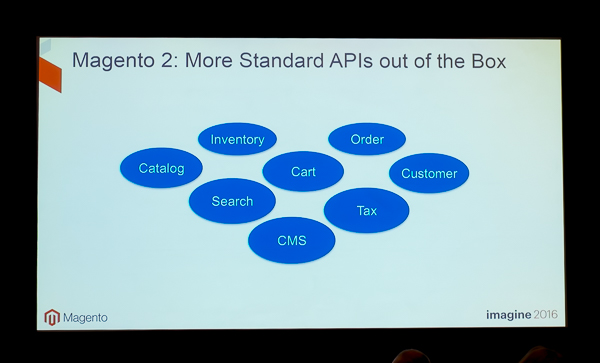
At the next session, Magento CEO Mark Lavelle introduced the concept of a Magento Trailblazer.
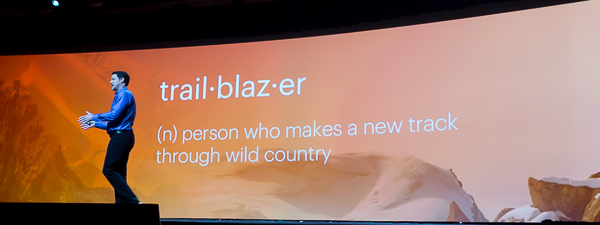
… as someone who is making new tracks through wild country.
eCommerce, in my opinion, is often an unexplored territory, and they used this metaphor to describe the growth of the platform.
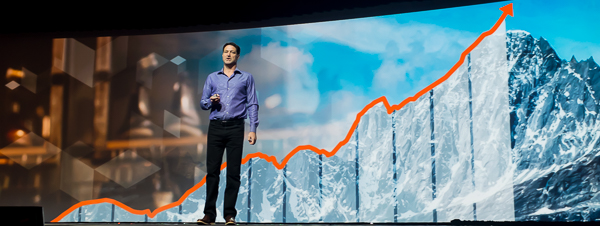
Master of Ceremonies, Jamie Clarke, was back again at the Magento Imagine conference. He’s the co-founder of LiveOutThere.com, as well as an adventurer. (Years ago, he was on an expedition with an old ski patrol colleague of mine.)

When Jamie first started as an MC at the Magento conference five years ago, he talked about how his tech guy told him what Magento was all about.
"Magento’s a Swiss Army Knife." Lots of tools that allow you to open a bottle of wine, cut through something with a knife blade, use tweezers or a toothpick, or poke a hole with an awl.
But this year, Jamie updated his metaphor. Instead of a tiny Swiss Army Knife, he felt that Magento was more like an Ice Ax:
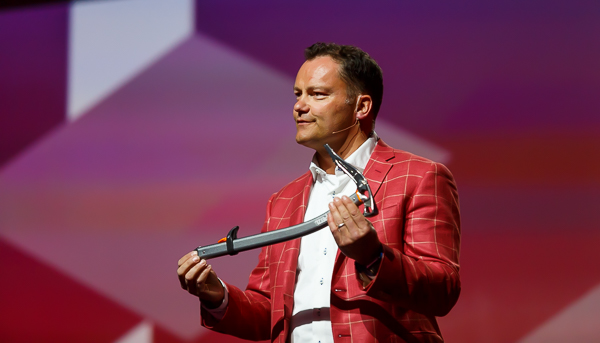
Before I settled down with kids, I did quite a bit of alpine mountaineering, and have used an ice ax quite a bit.
Anyone who has used an ice ax on the side of the mountain knows that it’s a serious tool that can mean the difference between success and failure, life and death.
So, I liked the updated metaphor:

As a segue, Magento later announced a Trailblazer Award.
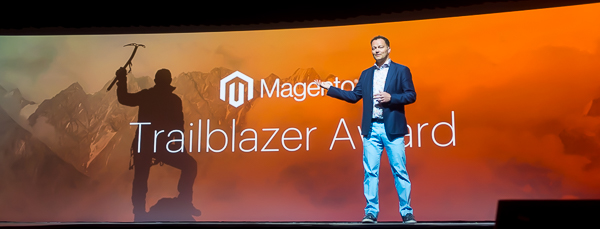
But I’ll cover that later, as the keynote speaker was a bit more interesting.
Jamie Clarke and Magic Johnson chest bumping at the Magento Imagine 2016 conference:

Magic Johnson talked quite a bit about his basketball career and how he didn’t like to lose.

But he pivoted and became a bit more relevant. Earvin "Magic" Johnson spoke about founding and running Magic Johnson Enterprises:

Magic spoke about how he was able to open up Starbucks stores in less advantaged areas by focusing on the end customer, and what they really wanted to buy.
As a result, those Starbucks locations had higher than average performance than other typical Starbucks locations. (Starbucks bought the locations back from him.)

Of course, a lot of people wanted selfies with Magic Johnson at the show:

But Magic Johnson spoke about how he’s approached business, and how he was able to earn the food service contract for Disneyland and DisneyWorld.
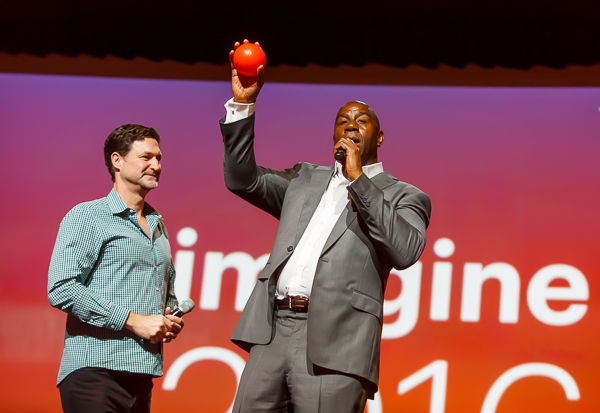
And how he wakes up at 5:00 am and works out every day, and how he hates to lose.
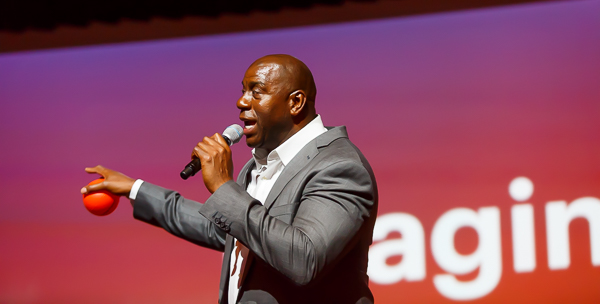
Magento CEO Mark Lavelle next shifted to the Developer community that makes Magento possible.
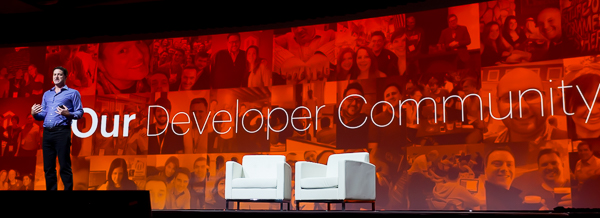
Lavelle focused on the Makers, Mentors and Movers that have contributed to the success of Magento during the past year.
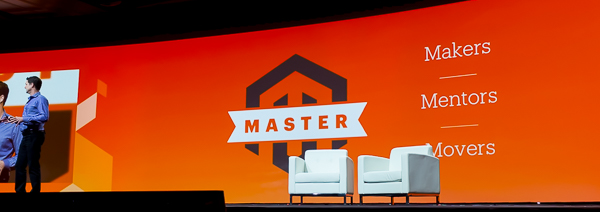
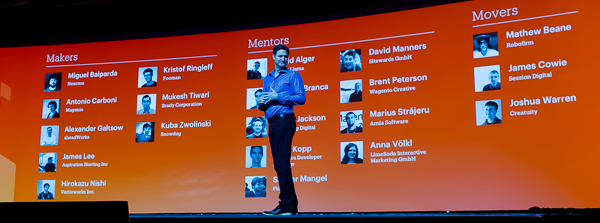
Among those honored was Miguel Balparda of Nexcess, who developed the Turpentine plugin that allows Magento 1.x systems to work with Varnish caching:
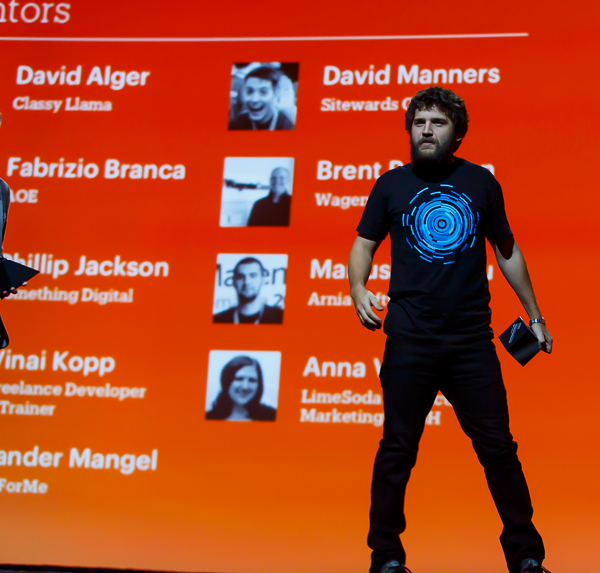
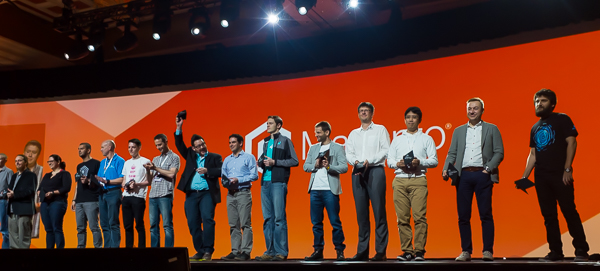
At the Magento Imagine 2016 conference, PayPal was a major sponsor. Until Carl Inchan got involved as an activist investor of eBay, both Magento and PayPal were under the same corporate umbrella.
In fast, Magento was purchased by eBay about five years ago, as a way to make sure that the payment gateway would be tightly bundled into the ever popular eCommerce open source system.

Steve Fusco, Vice President and General Manager of PayPal for North American Distribution, was on hand to talk about the trends in payments.
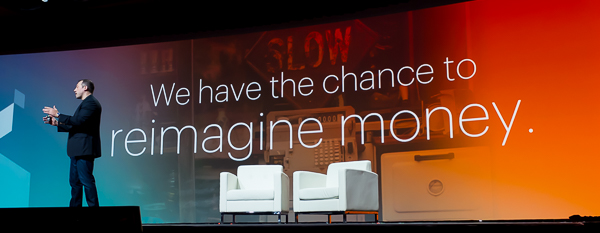
Fusco talked about the fact that mobile is here, and the world has both adopted mobile devices, as well as made money mostly digital.
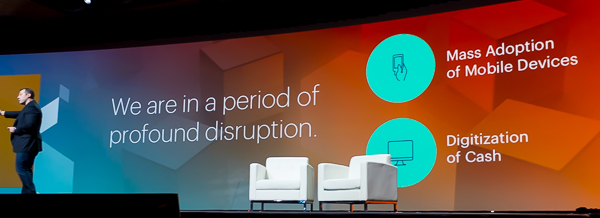
Five years ago, when I first attended the Magento Imagine conference, only 1% of the total payments going through PayPal was mobile. Today, that’s grown to 28%.
In 2015, there were 1.4 billion individual PayPal mobile transactions.
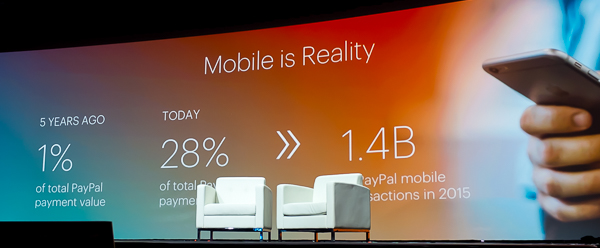
PayPal is expanding into contextual shopping, so you don’t have to leave what you’re doing to make a purchase or transaction.
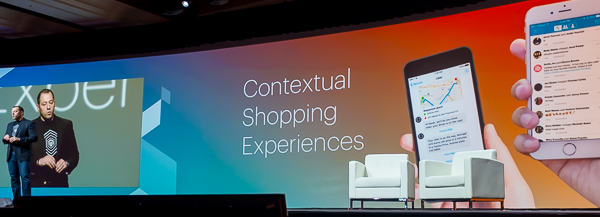
Fusco talked about how people love to buy things, but hate to spend money. Because money is more abstract when digital, people are happier to part with their digital currency vs. cash.
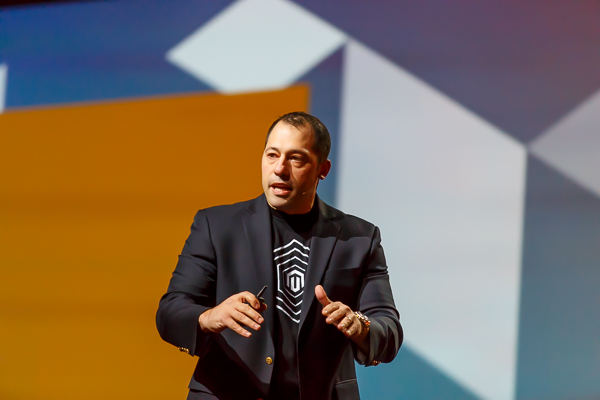
The New Magento Marketplace:
One of the best parts about Magento is that you have 8,000 different extensions on the marketplace that can extend the functionality of Magento. Need a web-to-print solution? Or a way to synchronize inventory? An extension might be able to help.
But one of the challenging parts of Magento 1.x were that extensions often would conflict with each other, and could be very problematic in terms of quality or being able to upgrade a site.
For Magento 2, Mark Lavelle introduced the New Magento Marketplace:
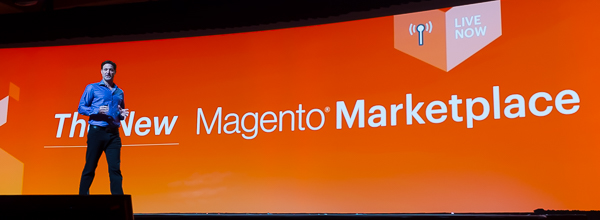
Extensions first have to go through an automated code check, as well as an in-depth review for quality, security and best practices for coding.
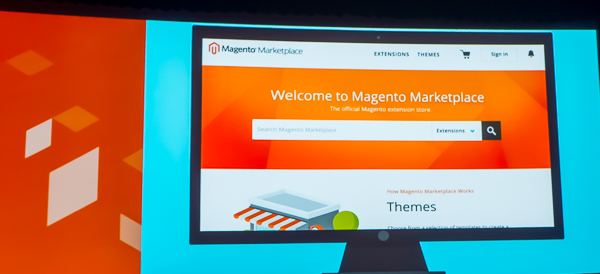
Customer Paradigm already has four extensions on the new Magento marketplace.
Magento is used by some of the top brands in the marketplace, including Coca Cola, Watsco, St. John’s Knits and more:
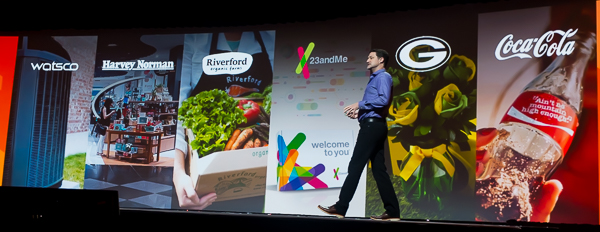
St. John’s Knits was an early adopter for the Magento 2 platform.

Scott Huckleberry, CIO of St. John Knits, sat down with Magento CEO Mark Lavelle:
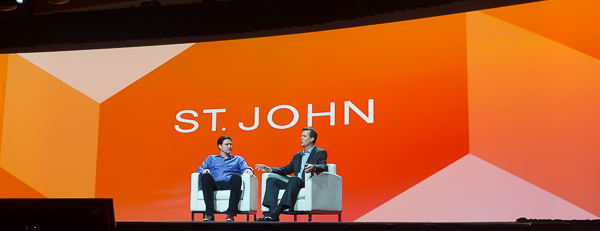
Huckleberry discussed how they tried to re-create the in-store experience online, and how they used the Magento 2 platform to create an amazing customer experience.
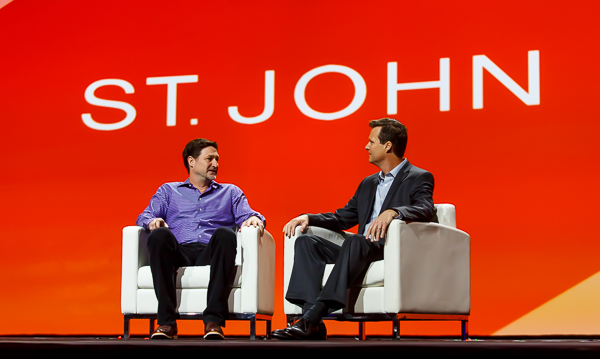
Next on stage: Fraport – Germany’s largest shopping mall, that happens to be located in Frankfurt’s airport.
Kai Schmidhuber, Senior VP of Multichannel for Fraport, sat down and discussed the crazy complex integration.
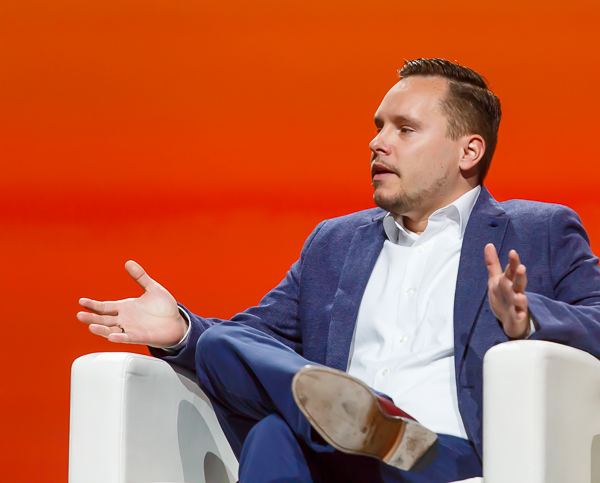
According to Schmidhuber, the system they built not only took orders via a mobile app, but also handled the order management capabilities as well. A customer could order a gift and have it delivered to them at their gate, right before a flight. Or order on the plane, and have it delivered to them after they cleared customs.
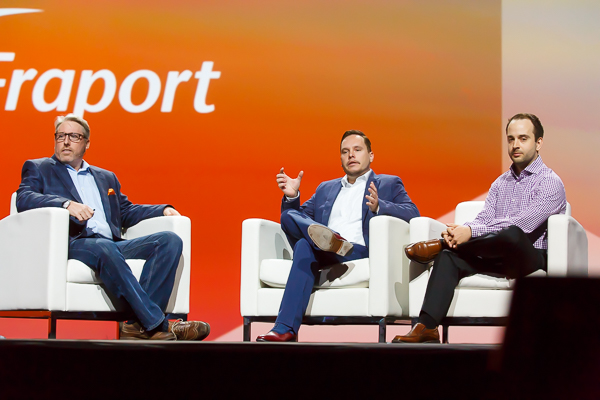
Delivery windows were tight – only 30 minutes in many cases.
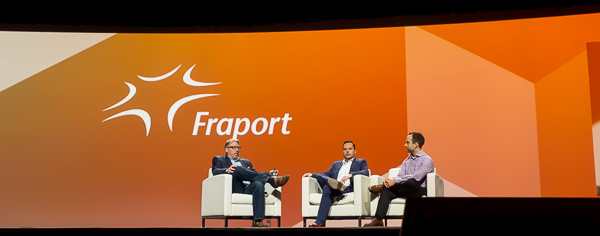
Another Magento 2.0 early customer success: Kurt Geiger, the parent company of brands including 9 West.
Steven King, head of Information Systems for Kurt Geiger, spoke about the lessons learned during the integration.

King talked about their various different brand sites, and the complexity of selling shoes online across multiple channels.

Why Magento 2? They wanted the fast, modern tech stack, and a built-in responsive / mobile friendly design.
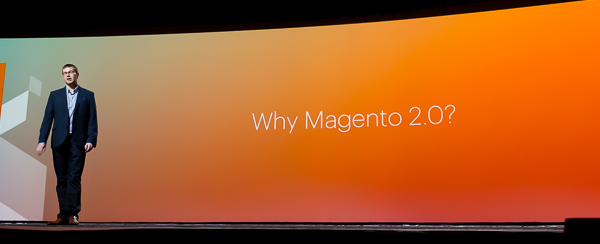
The plan: build out the ninewest.co.uk site as a plain vanilla site, using most of the built-in functionality of Magento Enterprise.
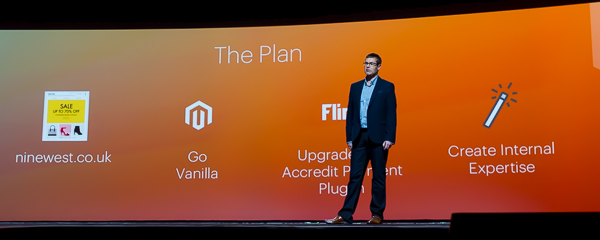
King said that the Magento support was excellent, and that they engaged with the Expert Consulting Group to make sure that they were following best practices and Magento 2 standards.
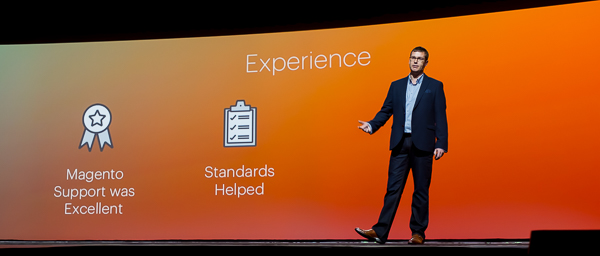
In the end, the site launched, and they are going to be bringing over more and more sites over to the Magento 2 platform.

Magento’s Commerce Order Manager is a newer product in the Magento mix.
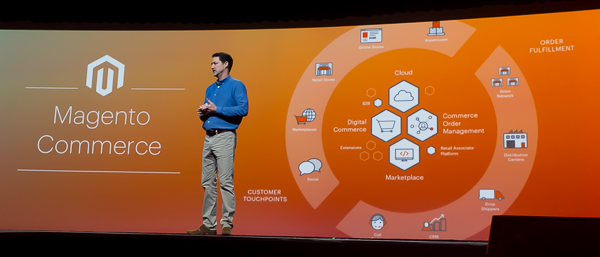
CEO Mark Lavelle introduced Michael Sonier, Senior Director for Omnichannel Products, to discuss the Magento Commerce Order Management system.
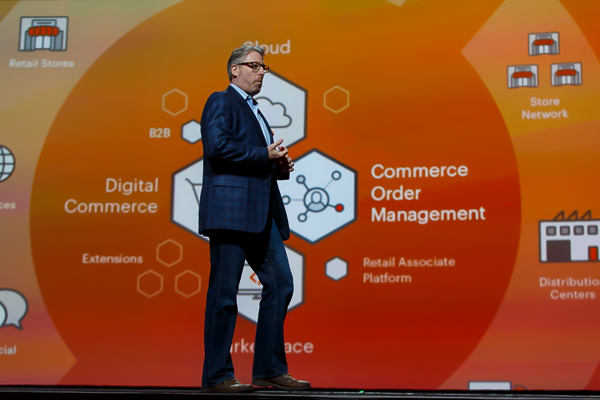
Sonier described the system as what happens before, during and after an order is placed:
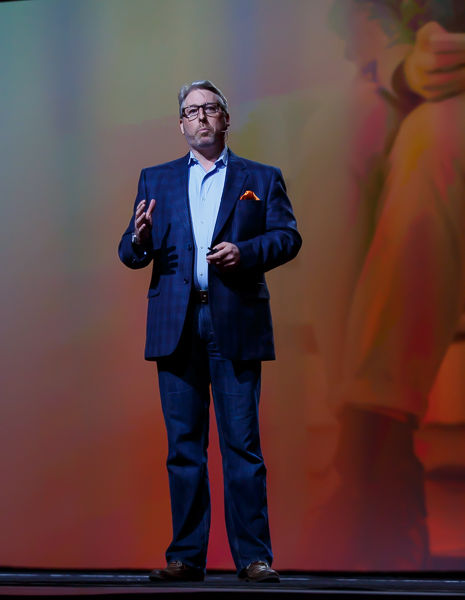
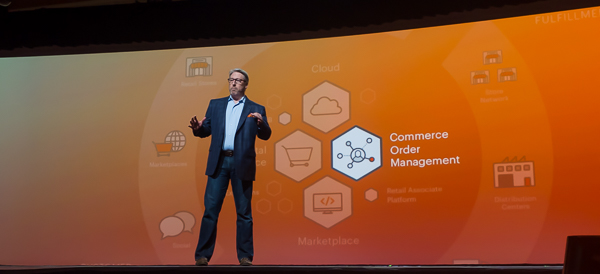
First, the order is captured, in a system like Magento.
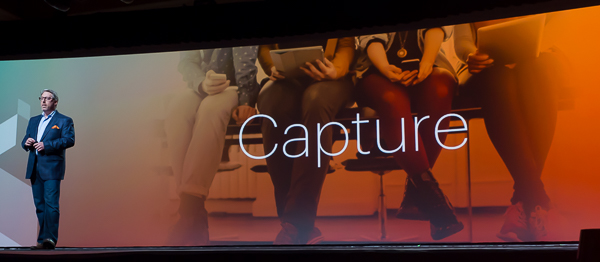
An order management system then finds the best source for the product, in the closest warehouse or suitable location:
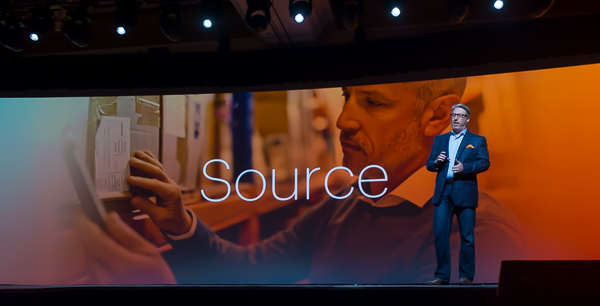
The order management system then fulfills the order as quickly and efficiently as possible.
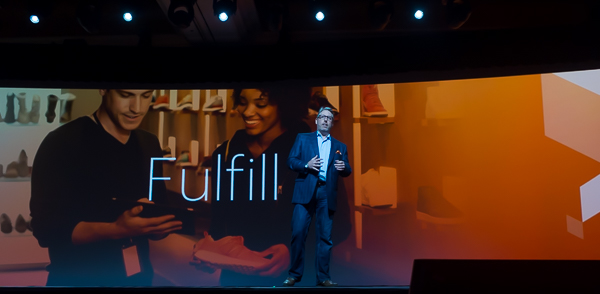
It sounds easy, but there’s a tremendous amount of complexity and logistics.
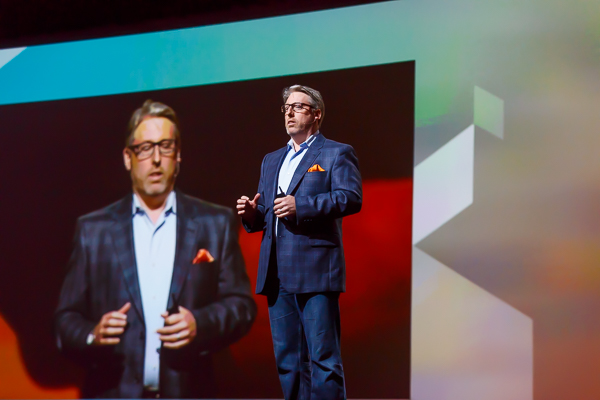
Okay… perhaps the biggest news out of Magento Imagine 2016 – Magento Enterprise Cloud Edition.
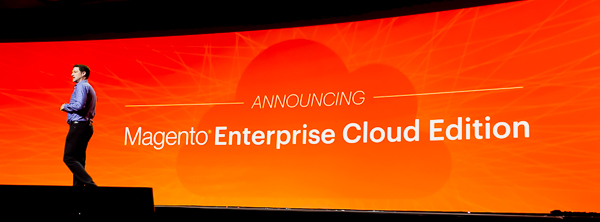
Peter Sheldon, head of Strategy for Magento Commerce, took the lead and discussed why Magento released this edition.
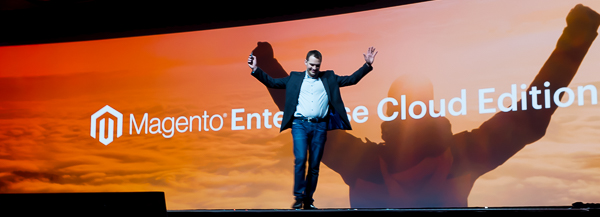
Calling the Enterprise Cloud Edition a national evolution for Magento, Sheldon said it was in response to a lot of industry trends.
Specifically, the issue in the eCommerce marketplace is that other solutions offer a hosted option, so that a merchant doesn’t have to worry about servers, scaling and infrastructure.
However, those hosted solutions, also known as SaaS (Software as a Service), have limitations. Because they are hosted solutions, developers don’t have access to the code base to create custom functionality.
So Magento shifted, and created PaaS (Platform as a Service).
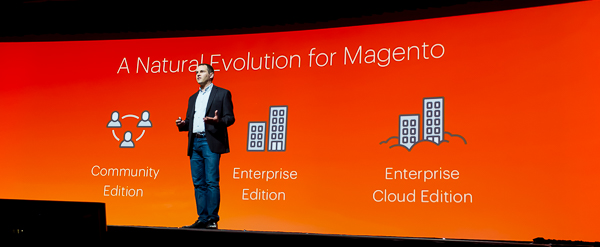
Magento Enterprise Cloud Edition uses AWS – Amazon Web Services – for cloud hosting, and offers triple redundancy.
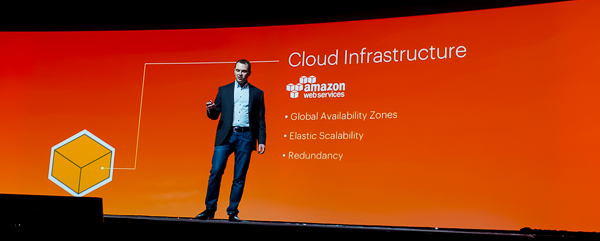
As a Platform as a Service, Magento Enterprise Cloud Edition offers continuous integration – meaning you can use GIT as a version control system, and have full control over the code base.
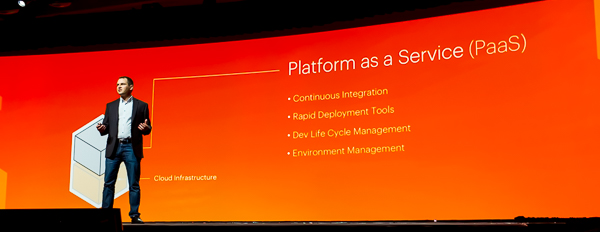
Sheldon, who formerly was an industry analyst as Forrester Research, was pretty excited to be announcing the platform.
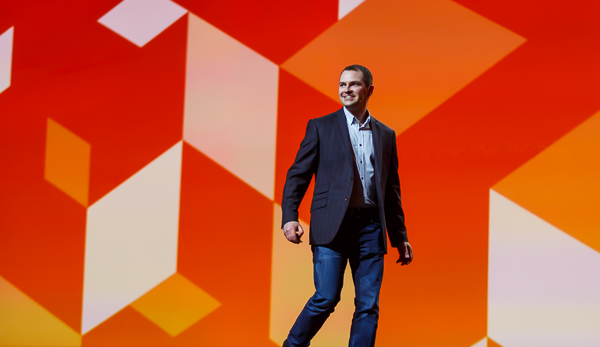
They showed a quick animated video, showing a person I guess having her cake and eating it too? (Perhaps I’m reading into the metaphor.)

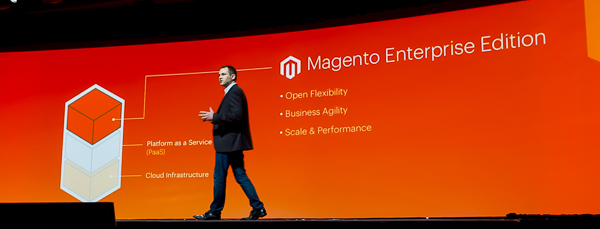
Built into the system are performance and testing tools, including New Relic, that helps identify issues and problems with Magento sites.
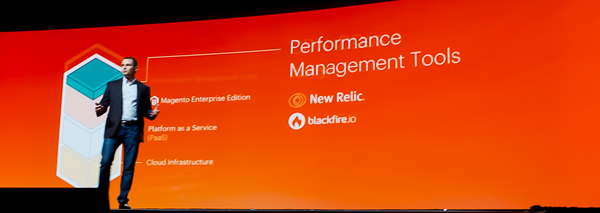
The cloud hosted version of Magento Enterprise includes 24/7 support and monitoring, as well as automatic scaling.
Meaning… if Oprah tweets about a product, the system will automatically start adding servers to keep up with the demand.
It also offers the ability to create a feature branch of the system using the git version control system if a new patch is made available for Magento. After automated tests are run, the branch can be made available to the customer or development team, who can test and make sure that the new security patch didn’t break anything else in the system.
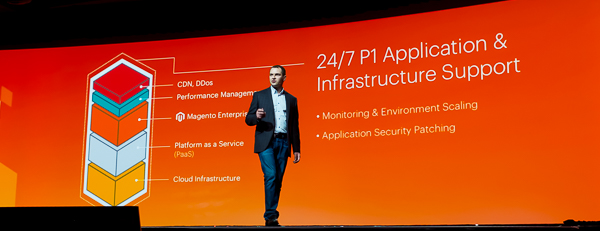
According to Sheldon, the Magento Enterprise Cloud Edition will be available May 1, 2016:
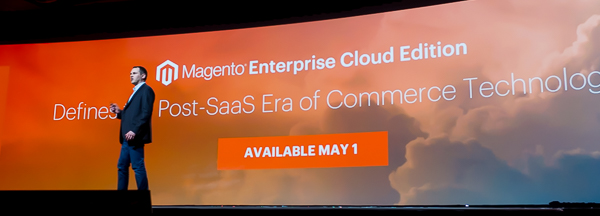
At the next technical breakout session, Doug McIver, Director of Product Management for Magento, did a bit of a deeper dive onto the systems behind Magento Enterprise Cloud Edition.
It’s built on the platform.sh system, that uses a modern git-driven architecture to create a full stack environment from each and every git branch.
Instead of a developer creating a feature branch in git, and having to spin up a new server that may be slightly different, the platform.sh system allows a developer to do this in minutes.
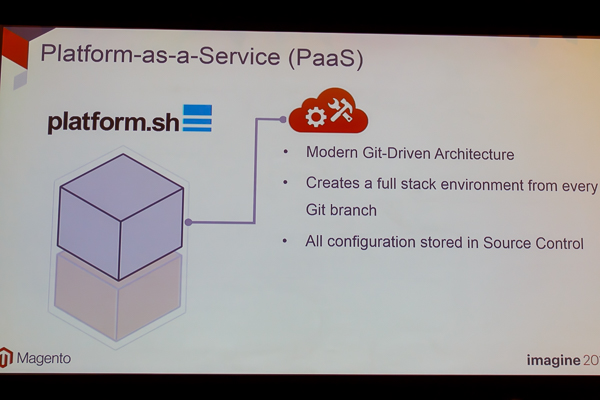
This makes the testing, acceptance and staging workflow process go much more quickly:
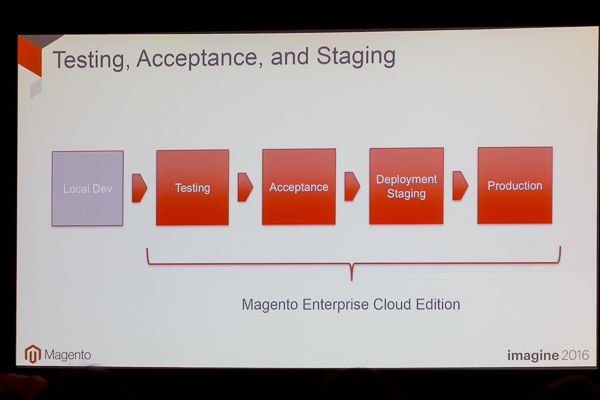
This is a view of the "Master" branch in the Magento Enterprise Cloud Edition, where you can see the git commits of the developers working on the system. It’s easy to roll back, too, if someone messed something up.
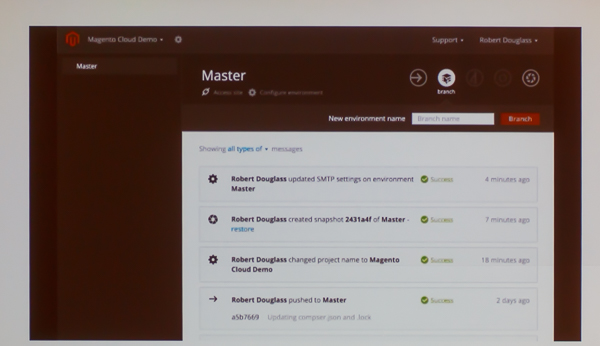
And one of the most amazing things of the process… each feature branch becomes its own site, with SSH access and web access for reviewing changes and programming:
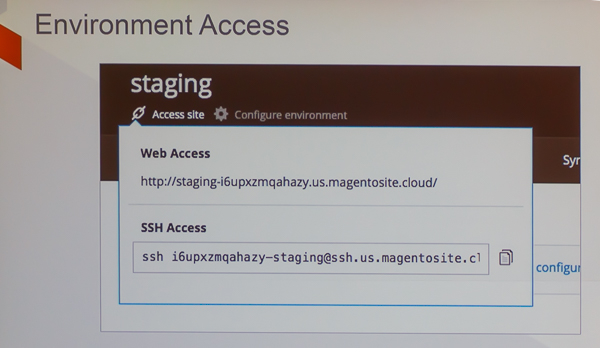
However, there are some additional safeguards, including the ability to set variables in a staging branch off.
For example, on a test or staging site, you might want to use the test credit card system instead of the live system. Or on a test site, you probably don’t want outgoing emails to send out to the customer service team if test orders are placed.
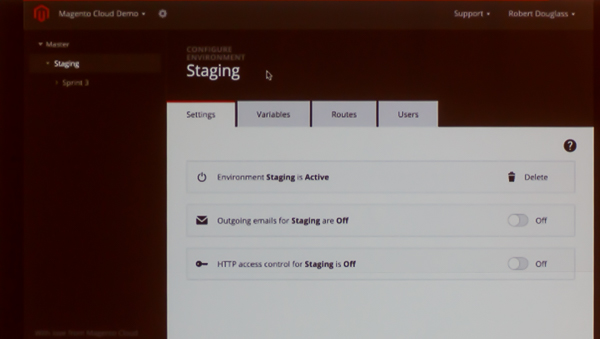
Composer is used as a way to handle a lot of the functionality of the system, including extension installation and more.
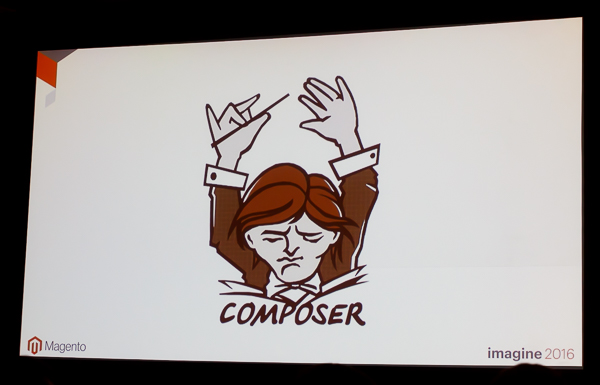
Finally, McIver discussed the integration of Magento 2 Enterprise Cloud Edition with a production environment, including:
- Easy ability to push from staging to production
- High availability of the application, including triple redundancy
- Zero down time for scaling up the application during high periods of demand
- 24 x 7 monitoring to make sure things don’t break
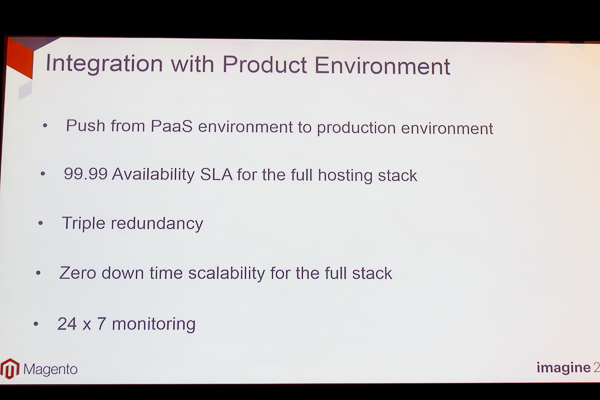
There was a lot of other great content at the show, including breakout sessions, and side conversations.
But at the end, the takeaway is that Magento Imagine 2017 will be back in Las Vegas, April 3-5 2017:
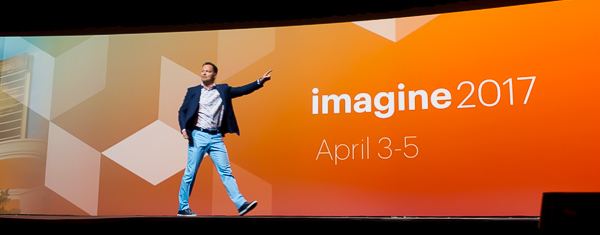
Until next time,

Jeff Finkelstein
Founder, Customer Paradigm
303.473.4400

